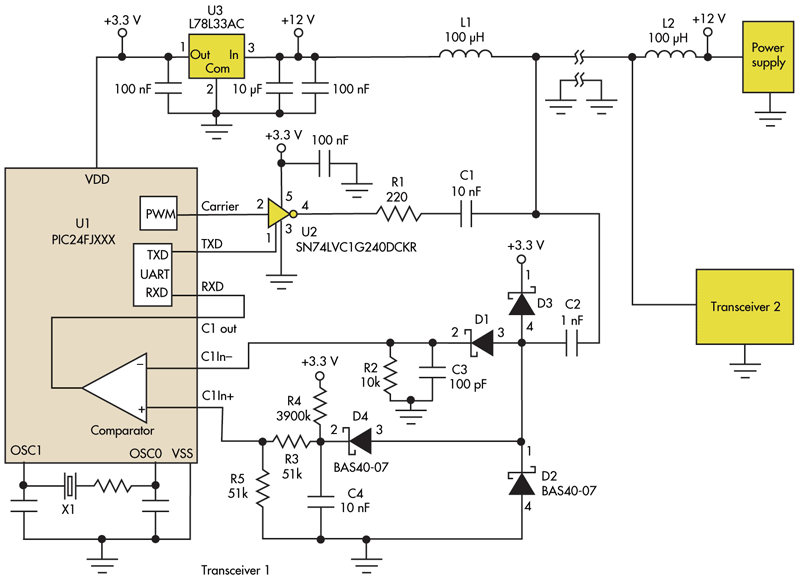
Sawtooth Generator Circuit with 741 IC

This sawtooth generator circuit utilizes a 741 operational amplifier (op-amp) and functions as a musical sound synthesizer. The sawtooth input signal is continuously modified through potentiometer P2 to create varying waveforms.
The sawtooth generator circuit primarily employs the 741 op-amp due to its versatility and availability. The configuration typically involves the op-amp in an integrator setup, where the output signal ramps up linearly and then quickly resets to produce the characteristic sawtooth waveform. The frequency of the sawtooth wave can be adjusted by varying the resistance and capacitance in the circuit, which is often accomplished using a variable resistor (P2).
In this circuit, the input signal is fed into the inverting terminal of the op-amp, while the feedback path includes a capacitor that charges and discharges based on the output voltage. As the capacitor charges, the output voltage rises, creating the linear ramp. Once the voltage reaches a predetermined threshold, the op-amp output switches states, causing the capacitor to discharge rapidly, resulting in the sharp drop characteristic of a sawtooth waveform.
The circuit may also include additional components such as diodes to protect against reverse polarity and resistors to set the gain of the op-amp. The output can be connected to a speaker or other audio processing equipment to produce sound. The frequency and amplitude of the output can be manipulated through the potentiometer and other passive components, allowing for a range of musical tones and effects to be synthesized. This makes the sawtooth generator a valuable tool in electronic music production and sound design.This sawtooth generator circuit use 741 IC and is used as a musical sound synthesizer. The sawtooth input signal is continously changed through P2 to a wav.. 🔗 External reference
The sawtooth generator circuit primarily employs the 741 op-amp due to its versatility and availability. The configuration typically involves the op-amp in an integrator setup, where the output signal ramps up linearly and then quickly resets to produce the characteristic sawtooth waveform. The frequency of the sawtooth wave can be adjusted by varying the resistance and capacitance in the circuit, which is often accomplished using a variable resistor (P2).
In this circuit, the input signal is fed into the inverting terminal of the op-amp, while the feedback path includes a capacitor that charges and discharges based on the output voltage. As the capacitor charges, the output voltage rises, creating the linear ramp. Once the voltage reaches a predetermined threshold, the op-amp output switches states, causing the capacitor to discharge rapidly, resulting in the sharp drop characteristic of a sawtooth waveform.
The circuit may also include additional components such as diodes to protect against reverse polarity and resistors to set the gain of the op-amp. The output can be connected to a speaker or other audio processing equipment to produce sound. The frequency and amplitude of the output can be manipulated through the potentiometer and other passive components, allowing for a range of musical tones and effects to be synthesized. This makes the sawtooth generator a valuable tool in electronic music production and sound design.This sawtooth generator circuit use 741 IC and is used as a musical sound synthesizer. The sawtooth input signal is continously changed through P2 to a wav.. 🔗 External reference





